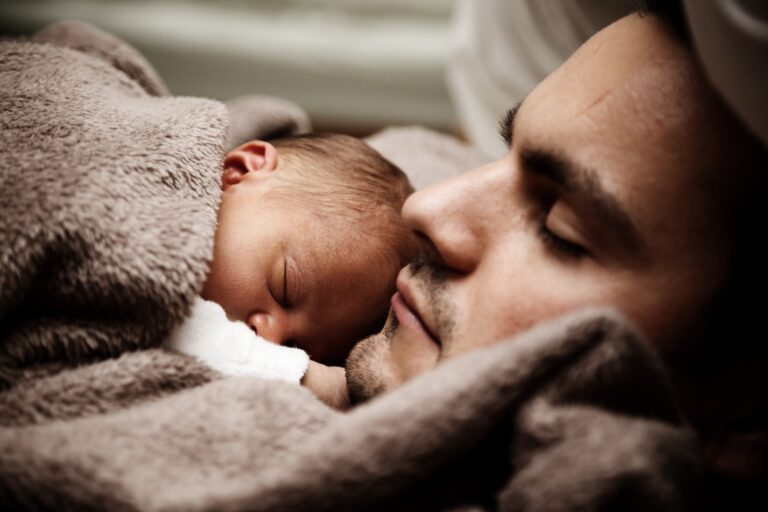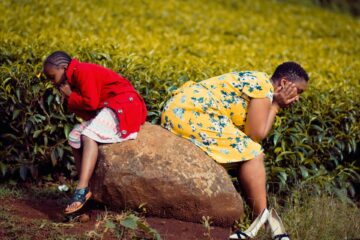If parenting had a dictionary, what would be the most commonly searched parenting terms?
This article seeks to address different words associated with parenting, including general words that describe modern parenting.
These words are common words that parents often use, of course, there are a ton of other words but let’s get you acquainted with the words below first.
PS: This is the first of a series: do you want to see the sequel? Sneak peek: The sequel focuses on words that describe parenting styles such as helicopter and free-range parenting styles.
And the first parenting term on the list is:
Baby massage
This is the act of rubbing and kneading your baby’s body with your hands to ease tension and give maximum relaxation. Giving your baby a massage is a wonderful, soothing therapy that is sure to calm your baby down if they’re being fussy and as a bonus, promote bonding time.
Sort of like their own personal date night, a spa day, Netflix and chill all rolled into one. The first baby massage is usually/should be done at birth during skin-to-skin contact.
Yes, mommy, gently stroking your baby’s back when they come fresh out of you covered in blood and goo with your partner looking down and nurses gushing over all that cuteness counts as massage.
Adoption
Adoption is the social, emotional, and legal process in which children who will not be raised by their birth parents become full and permanent legal members of another family while maintaining genetic and psychological connections to their birth family. [1]
With adoption, you can finally have the child you’ve always dreamt about. Pun intended. This process of adopting a child is legally demanding however, it’s a fine option to consider if you want kids.
Bottle-feeding
Bottle-feeding, the perceived evil twin sister of breastfeeding, that’s loved and desired by everyone who does it.
A baby bottle is a bottle designed with a teat or nipple to drink directly from. It’s also called a or nursing or feeding bottle. It’s typically used by infants and young children, or if someone cannot drink from a cup, for feeding oneself or being fed.
It can also be used to feed non-human mammals. Picture cats. To feed a human baby, you could be feeding formula exclusively, combining it with nursing or using bottles to serve up expressed breast milk.
Burping
The parenting term, burping, is also known as belching and eructation, but for the sake of cuteness, we’ll stick to burping.
It’s an important part of feeding a baby. Because babies drink all of their calories, it’s not uncommon for them to take in air in between bottles or breasts. Some babies can burp themselves, but most can’t. This is where you, dear parent, come in once again.
The idea behind burping your little one is to get rid of air that was accidentally swallowed during feeding. When a baby swallow way too much air and isn’t burped, they can spit up or get cranky (and nobody wants that).
Breast pump
The meaning is in the name. It’s a pump for the breast. A breast pump is a mechanical device that lactating women use to extract milk from their breasts. [2]
There are two types of breast pumps: a manual one (needs your hand or foot to get it working) and an automatic one (yay for electricity).
Breech
A breech pregnancy occurs when the baby or babies (yes, that can happen) is/are positioned head-up in the woman’s uterus, so the feet are pointed toward the birth canal.
In a “normal” pregnancy, the baby will automatically turn inside the womb into a head-down position to get ready for birth, so a breech pregnancy presents a few different challenges for both the mother and the baby. Let’s put on our thinking caps for a sec. If the baby is positioned sideways, what’s that called?
Caesarean section
Also known as C-section, or caesarean delivery, is the surgical procedure by which a baby is delivered through an incision in the mother’s abdomen, often performed because vaginal delivery would put the baby or mother at risk. [3]
Child proofing
This is basically your kid living in a bubble. A safe bubble.
Childproofing (also called baby proofing) is all about creating a physically safe environ for children – harmful objects are taken out of the child’s reach or surrounding. This comes in handy when the little one starts crawling.
Childproofing may include restriction of children to safe areas or preventing children from reaching unsafe areas. Restrictions could come in the form of physical barriers, covering up of unsafe items, locking doors, restricting access to only specified locations or rooms. You can child proof your home by yourself, parent, or hire a professional to do it.
Colostrum
The first ‘milk’!
Colostrum is a nutritious breast fluid produced by humans, cows, and other mammals before (regular) breast milk is released. It’s rich in certain proteins (antibodies) that help fight against bacteria and other infections.
Colostrum promotes growth and health in infants and newborn animals, but research shows that taking bovine colostrum supplements may promote immunity, help fight infections, and improve gut health throughout life. [4]
Colic
Colic is not a disease or diagnosis but a rather baffling behavior.
It’s when an infant who isn’t sick or hungry cries for more than 3 hours a day, 3 days a week, and for more than 3 weeks. And for this it has earned the nickname, ‘the banshee wail.’
Foster parents
According to Collins English dictionary, foster parents are people who officially take a child into their family for a period of time, without becoming the child’s legal parents. This is the real definition of ‘home away from home’.
Latch On
Latch on means to get the mouth of a breastfeeding baby into the correct position around the nipple. The only thing harder than this is passing a cow through the eye of a needle.
Jaundice
Jaundice is a condition that affects newborns, young children, and adult. When a child is jaundiced, their skin and the whites of their eyes become yellow or have a yellowish tinge.
The intensity of the coloration depends on the amount of bilirubin present in the child’s blood. What’s bilirubin? It’s the culprit that causes jaundice – high bilirubin levels. It’s a waste product that’s gotten when red blood cells are broken down.
This condition often goes hand in hand with anaemia. For newborns with jaundice, treatment is usually by phototherapy – this helps reduce bilirubin levels in the blood.
Nipple confusion
Nipple confusion is what happens when a baby who’s used to being bottle-fed finds it difficult to be breast-fed. Hence, it becomes difficult for them to accept the breast which looks and feel different. Also, they might experience issues with latching on to the nipple. Talk about separating fact from fiction.
One way to ease this confusion is to use bottles that are designed to look and feel like the breasts.
What does parenting read like alphabetically? Click to check out the ABCs of parenting!
On-demand feeding
This is feeding your baby whenever they signal that they are hungry, rather than according to a set schedule. Baby wants what baby wants when baby wants it.
Reflux
When a baby refluxes, it means that they spit up their food either during or shortly after feeding. This is the worst nightmare of anyone that has ever fed a baby.

Skin-to-skin
Skin-to-skin contact is usually referred to as the practice where a baby is dried and laid directly on their mother’s bare chest after birth. Both of them are covered in a warm blanket and left for at least an hour or until after the first feed to promote bonding between mummy and baby.
Think of kangaroos: babies in a pouch.
Water breaking
Your baby is ready to come into planet Earth when the amniotic sac ruptures. The rupturing of the amniotic sac is referred to as “water breaking”. So technically, it’s not ‘water’, but you get the general idea.
During pregnancy, your little one is enveloped/enclosed by the amniotic sac, a membranous sac that’s filled with fluid. The essence of the fluid is to protect the foetus, provide nutrients, allow the foetus to move with ease, and it also regulates temperature.
The fluid is usually a trickle or more and might stain your underwear and outer clothing. No, a whole rush of fluid isn’t going to suddenly pour through your legs.
Weaning vs Baby-led weaning
Weaning is when a baby (6 months old or older) graduates from the class of breast milk to the next food class such as purees or even solids.
Baby-led weaning, on the other hand, is when babies reject purées or mashed-up foods and accept solids like finger foods. Skip the appetizer, and go straight to the entrée!
Booger sucker
The meaning is in the name. It’s a nasal aspirator used to suck out boogers from babies’ nostrils. As opposed to, you know, sucking it yourself with your mouth.
Nursing pillows
Nursing pillows are used to place the baby and nurse. Feeding time just got lit!
The End
And that’s all the parenting terms for now! These terms are words most parents have come across right from where their parenting journey began – conception.
Is there a parenting term you’ll like to see featured on the list? Then drop a comment below.
Again, there’s a sequel.



2 Comments
Nirvana · May 4, 2021 at 10:30 pm
Well, I feel really enlightened and reading this was so enjoyable.
Kids Naija · May 5, 2021 at 6:52 am
Glad you enjoyed it!
Comments are closed.